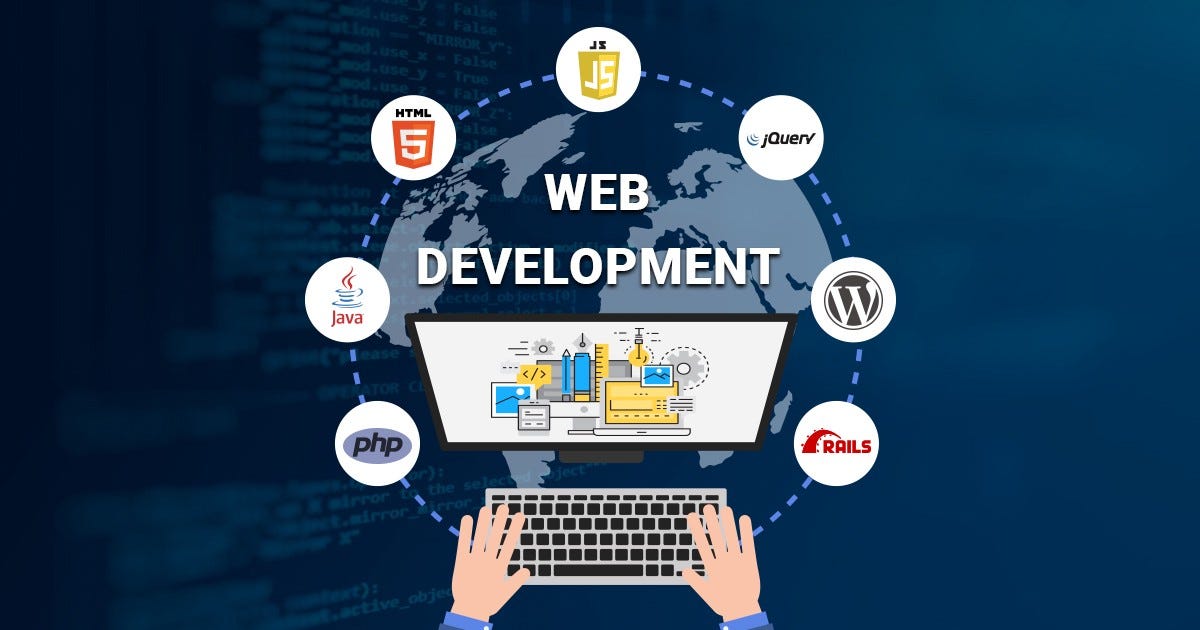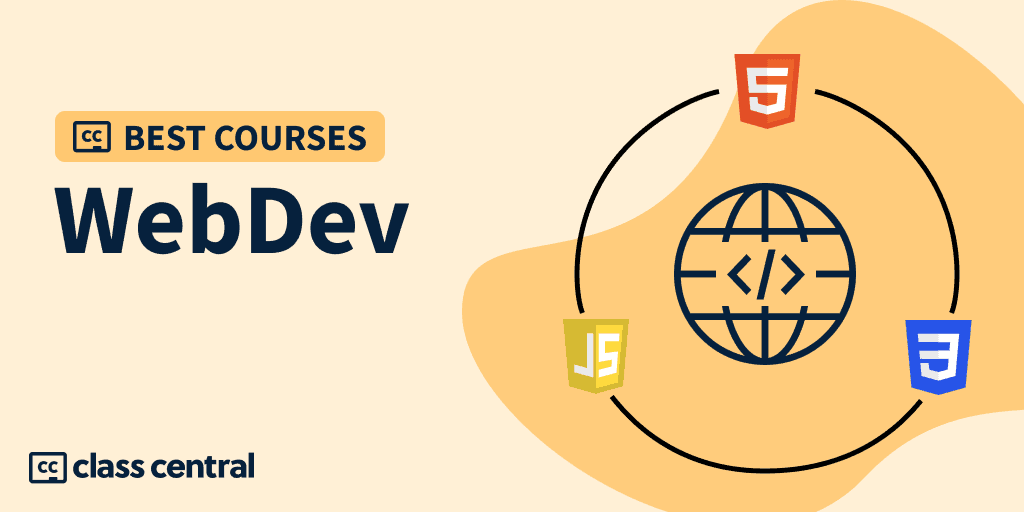The best for website development is using a combination of HTML, CSS, and JavaScript. These technologies ensure a responsive and interactive user experience.
Building a website involves several critical choices. Selecting the right tools and technologies is essential. HTML provides the structure, CSS adds style, and JavaScript enables interactivity. Together, they create a seamless user experience. These technologies are widely supported and continuously updated.
They offer flexibility, scalability, and compatibility across various devices and browsers. For more complex needs, consider frameworks like React or Angular. These frameworks can speed up development and enhance functionality. Ultimately, the best choice depends on your project requirements and goals. Consider ease of use, community support, and future scalability when making your decision.
Essential Tools
Choosing the right tools for website development is crucial. These tools make your work easier and faster. Let’s explore some essential tools for developing a website.
Content Management Systems
Content Management Systems (CMS) are powerful tools. They help manage your website content efficiently. Popular CMS options include:
- WordPress: Ideal for blogs and small business websites.
- Joomla: Great for complex websites and online stores.
- Drupal: Suitable for large-scale websites and applications.
Each CMS has its own advantages. WordPress is user-friendly. Joomla offers flexibility. Drupal provides robust security.
Website Builders
Website builders are perfect for beginners. They offer drag-and-drop features. This makes website creation simple and quick. Popular website builders include:
- Wix: Known for its ease of use and beautiful templates.
- Squarespace: Great for creatives and portfolio websites.
- Weebly: Offers a balance of simplicity and functionality.
Website builders often come with hosting. This means you don’t need separate hosting services. They also offer customer support, making them ideal for new developers.

Coding Platforms
Coding platforms are essential tools for website development. They help developers write, test, and debug code. Choosing the right coding platform can enhance productivity and code quality.
Integrated Development Environments
Integrated Development Environments (IDEs) are feature-rich tools. They offer a complete environment for coding, debugging, and testing. Popular IDEs include Visual Studio Code, IntelliJ IDEA, and Eclipse.
Here are some features of IDEs:
- Code Completion: Helps write code faster with suggestions.
- Debugging Tools: Allows you to find and fix errors quickly.
- Version Control: Integrates with Git and other tools for managing code versions.
- Plugins and Extensions: Adds extra functionality to the IDE.
Using an IDE can make website development more efficient and enjoyable.
Text Editors
Text Editors are simpler tools for coding. They are lightweight and fast. Popular text editors include Sublime Text, Atom, and Notepad++.
Key features of text editors:
- Customization: Easily customizable with themes and plugins.
- Speed: Fast and responsive, even with large files.
- Syntax Highlighting: Highlights code syntax for readability.
- Multi-language Support: Supports various programming languages.
Text editors are ideal for developers who prefer simplicity and speed.
| Feature | IDE | Text Editor |
|---|---|---|
| Code Completion | Yes | Limited |
| Debugging Tools | Yes | No |
| Version Control | Yes | Limited |
| Customization | Yes | Yes |
| Speed | Moderate | High |
Choosing between an IDE and a text editor depends on your needs. Consider your project requirements and personal preferences.
Design Tools
Design tools are essential for creating visually appealing and functional websites. They help web developers bring their ideas to life efficiently. This section explores two main categories of design tools: graphic design software and prototyping tools.
Graphic Design Software
Graphic design software is vital for web design. It creates visuals, logos, and layouts. These tools help designers craft unique websites. Popular graphic design software includes:
- Adobe Photoshop: Ideal for photo editing and web graphics.
- Adobe Illustrator: Best for vector graphics and logos.
- Sketch: Great for UI/UX design and prototyping.
- Canva: Easy-to-use for beginners and quick designs.
Choosing the right graphic design software depends on your needs. For photo editing, use Photoshop. For vector graphics, Illustrator is best. Each tool has its strengths. Pick one that suits your project.
Prototyping Tools
Prototyping tools are crucial for web development. They allow designers to create interactive and functional prototypes. These tools help visualize the final product before coding. Popular prototyping tools include:
- Figma: Collaborative interface design and prototyping tool.
- Adobe XD: Easy-to-use for designing and prototyping.
- InVision: Powerful for creating interactive prototypes.
- Axure RP: Advanced tool for complex prototypes and wireframes.
Prototyping tools save time and resources. They help identify issues early. Using these tools ensures a better final product. Choose a prototyping tool that meets your project’s needs.
Seo Tools
SEO tools are essential for website development. They help improve search engine rankings. Use these tools to attract more visitors. Here are some key SEO tools that can make a big difference.
Keyword Research
Keywords are the backbone of SEO. They help search engines understand your content. Use keyword research tools to find the best keywords for your site.
Some popular keyword research tools include:
- Google Keyword Planner
- Ahrefs
- SEMrush
These tools help you find keywords with high search volume. They also show the competition level for each keyword. Choose keywords that are relevant to your content. This will help you rank higher in search results.
Analytics
Analytics tools track your website’s performance. They show how visitors interact with your site. Use this data to improve your content and user experience.
Some popular analytics tools include:
- Google Analytics
- Adobe Analytics
- Matomo
These tools provide valuable insights. You can see which pages are popular. You can also track your traffic sources. This helps you understand what works and what doesn’t.
| Tool | Function |
|---|---|
| Google Keyword Planner | Keyword Research |
| Ahrefs | Keyword Research |
| SEMrush | Keyword Research |
| Google Analytics | Website Analytics |
| Adobe Analytics | Website Analytics |
| Matomo | Website Analytics |
Using these tools can significantly improve your website’s SEO. They help you make informed decisions. This leads to better rankings and more traffic.
Testing Tools
Testing tools are essential for website development. They help ensure the website’s functionality, performance, and compatibility. Using the right tools can save time and improve the overall user experience. Below are some important testing tools categorized under performance testing and cross-browser testing.
Performance Testing
Performance testing tools help you measure how your website performs under various conditions. Here are some popular tools:
- Google Lighthouse: A free tool that provides insights into page speed and performance.
- GTmetrix: Analyzes your website’s speed and gives actionable recommendations.
- WebPageTest: Allows you to test your website from different locations and browsers.
These tools help you identify bottlenecks and improve website speed. Faster websites lead to better user satisfaction and SEO rankings.
Cross-browser Testing
Cross-browser testing ensures your website works well on different browsers. Here are some popular tools:
- BrowserStack: A cloud-based service for testing across multiple browsers and devices.
- Sauce Labs: Provides automated and manual testing on various browser-device combinations.
- CrossBrowserTesting: Offers a comprehensive solution for cross-browser compatibility testing.
Ensuring cross-browser compatibility is crucial. It helps you reach a wider audience and offers a consistent user experience.

Collaboration Tools
Website development requires effective collaboration tools. These tools streamline teamwork and ensure smooth project execution. Let’s explore the essential collaboration tools for website development.
Version Control Systems
Version Control Systems (VCS) track changes in code. They allow multiple developers to work on the same project. Popular VCS include Git, SVN, and Mercurial. Git is the most widely used VCS. It offers distributed version control and strong branching capabilities.
- Git: Distributed version control, strong branching.
- SVN: Centralized version control, straightforward to use.
- Mercurial: Similar to Git, but simpler.
With VCS, you can:
- Track changes over time.
- Revert to previous versions.
- Collaborate without conflicts.
Project Management Software
Project Management Software helps teams plan, execute, and track project progress. It ensures deadlines are met and tasks are completed efficiently. Popular tools include Jira, Trello, and Asana.
| Software | Features |
|---|---|
| Jira | Agile management, issue tracking. |
| Trello | Kanban boards, easy-to-use interface. |
| Asana | Task management, project timelines. |
Using project management software, you can:
- Assign tasks to team members.
- Set deadlines and milestones.
- Monitor project progress.
Best Practices
Creating a successful website requires following best practices. These practices ensure your website is efficient and user-friendly. By adhering to these guidelines, your website will perform well and provide a great user experience.
Responsive Design
A responsive design means your website looks good on all devices. This includes desktops, tablets, and smartphones. A responsive site automatically adjusts its layout based on the screen size. This ensures that users have a seamless experience regardless of the device they use.
Here are some best practices for responsive design:
- Use fluid grids instead of fixed widths.
- Optimize images to load quickly on all devices.
- Ensure touch-friendly navigation for mobile users.
- Test your design on multiple devices and screen sizes.
User Experience
User experience (UX) focuses on how users interact with your website. A good UX means your site is easy to use and navigate. This keeps users engaged and encourages them to return.
Follow these best practices for enhancing user experience:
- Keep your design simple and clutter-free.
- Use clear and concise headings and subheadings.
- Ensure fast loading times to reduce bounce rates.
- Provide easy navigation with intuitive menus and buttons.
- Make important information easily accessible.
Below is a table showing some key aspects of user experience:
| Aspect | Importance |
|---|---|
| Loading Speed | High |
| Navigation | Medium |
| Content Clarity | High |
| Visual Appeal | Medium |
By focusing on responsive design and user experience, you can ensure your website is both functional and user-friendly.

Frequently Asked Questions
What Is The Best Platform For Website Development?
The best platform depends on your needs. WordPress is great for blogs, while Shopify excels in e-commerce. For custom solutions, consider using frameworks like Django or Ruby on Rails.
Is WordPress Good For Website Development?
Yes, WordPress is user-friendly and highly customizable. It’s excellent for blogs, small businesses, and portfolios. Its vast plugin library extends functionality.
Which Programming Language Is Best For Web Development?
JavaScript is highly popular due to its versatility. Python is also great for beginners. PHP is widely used for server-side scripting.
How Important Is Website Design In Development?
Website design is crucial for user experience. A well-designed site attracts and retains visitors. It also improves navigation and accessibility.
Conclusion
Choosing the best option for website development depends on your specific needs and goals. Whether it’s WordPress, custom coding, or a website builder, each has its advantages. Ensure you select a solution that offers scalability, security, and user-friendliness. Make an informed decision to build a strong online presence.
